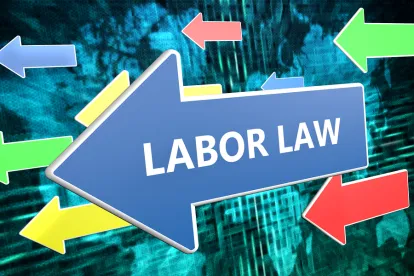The California Worker Adjustment and Retraining Notification (WARN) Act (Labor Code Section 1400 et seq.) sets forth procedural requirements that a covered employer must follow prior to a mass layoff, relocation, or termination. On March 17, 2020, California Governor Gavin Newsom issued Executive Order N-31-20, concerning COVID-19 and the conditional suspension of certain requirements under California WARN. The Order can be found here, and you can read our prior analysis about the Order’s effect on commercial drivers here. Governor Newsom ordered the Labor and Workforce Development Agency to provide guidance about the suspension of the WARN requirements.
On March 23, 2020, the California Department of Industrial Relations, the Labor and Workforce Development Agency, and the Employment Development Department provided the following guidance on the conditional suspension of the California WARN Act.
(1) Is there a change to the 60-day notice requirement in the California WARN Act because of the COVID-19 pandemic?
Yes. The 60-day notice requirement is temporarily suspended for employers that satisfy the Order’s specific conditions. The suspension is intended to permit employers to act quickly in order to mitigate or prevent the spread of coronavirus.
(2) What impact does the Executive Order have on an employer’s ability to close an establishment (temporarily or permanently) because of COVID-19?
An employer may close down a business to prevent or mitigate effects of the COVID-19 pandemic without providing the statutory 60-day notice. For purposes of the California WARN Act, a closure may occur in one of three ways:
-
A mass layoff: a layoff during any 30-day period of 50 or more employees at a covered establishment.
-
A relocation: the removal of all or substantially all of the industrial or commercial operations in a covered establishment to a different location 100 miles or more away.
-
A termination: the cessation or substantial cessation of industrial or commercial operations in a covered establishment.
(3) What conditions must an employer satisfy to qualify for the Executive Order’s suspension of the California WARN Act’s 60-day notice requirement?
An employer seeking to rely on the Executive Order’s suspension of the California WARN Act’s 60-day notice requirement must satisfy all of following conditions:
-
(1) The employer’s mass layoff, relocation or termination must be caused by COVID-19-related “business circumstances that were not reasonably foreseeable at the time that notice would have been required.”
-
(2) The employer must provide written notices to: affected employees; all representatives of the affected employees (g., unions); the EDD; the Local Workforce Development Board; and the chief elected official of each city and county government within which the termination, relocation, or mass layoff occurs.
-
(3) The employer must provide written notice that satisfies the following requirements:
-
The notice gives as much notice as is practicable (e., reasonably possible) at the time notice is given to employees and their representatives.
-
Provides a brief statement as to why the 60-day notification could not be met.
-
Includes the following statement: “If you have lost your job or been laid off temporarily, you may be eligible for Unemployment Insurance (UI). More information on UI and other resources available for workers is available at ca.gov/coronavirus2019”
-
Includes the following information:
-
Name and address of the employment site where the closing or mass layoff will occur.
-
Name and phone number of a company official to contact for further information.
-
Statement as to whether the planned action is expected to be permanent or temporary and, if the entire location is to be closed, a statement to that effect.
-
Expected date of the first separation, and the anticipated schedule for subsequent separations.
-
Job titles of positions to be affected, and the number of employees to be laid off in each job classification.
-
In the case of layoffs occurring at multiple locations, a breakdown of the number and job titles of affected employees at each location.
-
An indication as to whether or not bumping rights exist.
-
Name of each union representing affected employees, if any.
-
Name and address of the chief elected officer of each union, if applicable.
-
-
(4) How do I send the California WARN Act Notices?
To Employees – the required notice should be sent via any reasonable method of delivery that ensures receipt by the affected employee (e.g., first class mail, personal delivery, email, etc.)
To the EDD – the required notice should be emailed to eddwarnnotice@edd.ca.gov, and the email should include the following information:
-
The notice (as an attachment or within the body of the email).
-
Contact information for an employer representative in the event the EDD needs more information.
To the Local Workforce Development Board and Chief Elected Officials – Employers should contact their Local Workforce Development Areas (Local Areas) for specific assistance and contact information.
(5) How do I know if I am an employer covered by the California WARN Act?
The Act is applicable to employers that employ, or have employed in the preceding 12 months, 75 or more full-time or part-time workers.
(6) What should an employer do with respect to notice if a closure occurred on or after March 4, 2020 but before the Executive Order was issued on March 17, 2020?
The COVID-19 state of emergency began on March 4, 2020. Between that date and the issuance of the Executive Order, because the California WARN Act was not subject to suspension, employers should have been providing notice as specified under the Act. Now that the Executive Order is in effect, an employer seeking to avail itself of the suspension must satisfy the conditions specified in the Executive Order (described in response to Question (3) above). The guidance does not provide for any sort of “cure” method for inadequate notice provided by an employer affected by COVID-19.
(7) Do I still need to send a WARN Notice to EDD given the Executive Order suspending the 60-day notice requirement?
Yes. The Executive Order does not eliminate the written notice requirement, it only reduces the notice period and requires an employer to provide as much notice as practicable. An employer who orders a mass layoff, relocation or termination without any written notice could be subject to liability under the California WARN Act.
(8) If an employer fails to give any notice at all on the basis that the layoff or closure is due to a “physical calamity,” will that employer be shielded from liability?
It depends. The administrative guidance provided is that an employer may only avail itself of the physical calamity exception, and provide no notice to affected employees whatsoever, if it can prove it meets the definition of a physical calamity. Therefore, an employer would need to prove that the COVID-19 pandemic is a physical calamity. However, there are currently no precedential cases interpreting what constitutes a physical calamity for purposes of the California WARN Act and given the suspension of the 60-day notice requirement, an employer can provide notice to affected employees on a shorter timetable so long as they meet the applicable conditions.
(9) How long is the California WARN Act temporarily suspended?
The Executive Order suspends the California WARN Act from March 4, 2020 through the end of the state of emergency declared as a result of the threat of COVID-19. As of the writing of this blog, there is no known end date.
As you are aware, things are changing quickly and there is no clear-cut authority or bright line rules. This is not an unequivocal statement of the law, but instead represents our best interpretation of where things currently stand. This summary does not address the potential impacts of the numerous other local, state and federal orders that have been issued in response to the Covid-19 pandemic, including, without limitation, potential liability should an employee become ill, requirements regarding family leave, sick pay and other issues.




 />i
/>i
